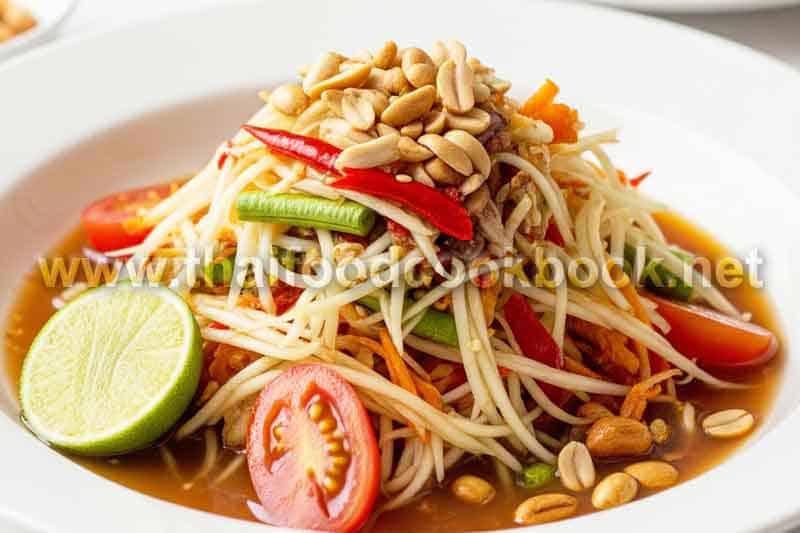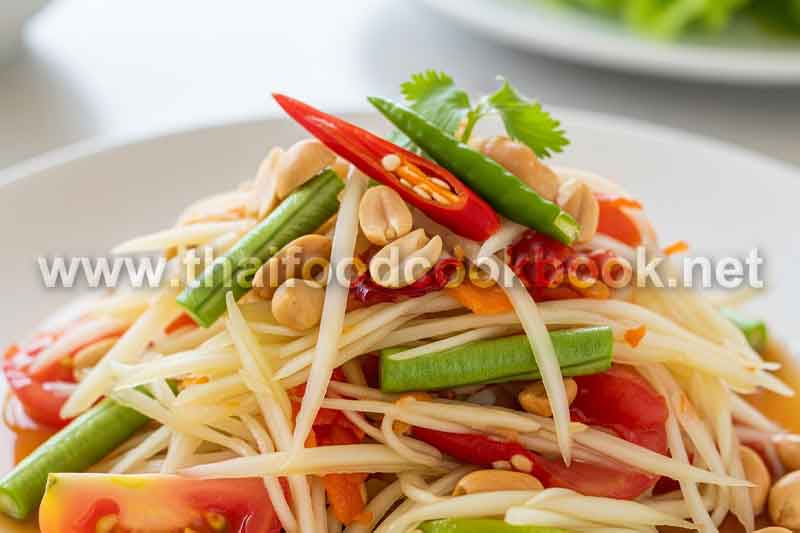How to Build Real Thai Flavor: Sweet, Sour, Salty, Spicy Balance
Understanding how to build real Thai flavor comes down to mastering a delicate sweet–sour–salty–spicy balance, the heart of all traditional Thai dishes. While beginners often assume Thai food is dominated by chili heat, authentic Thai flavor actually relies on harmony, not intensity. The secret is learning how these four pillars interact: sweetness (from palm sugar or coconut sugar), sourness (from lime or tamarind), saltiness (from fish sauce or sea salt), and spiciness (from chilies). When the cook controls proportion and layering, the taste becomes round, aromatic, and addictive — exactly the flavor foreigners refer to when describing the rich depth of real Thai flavor. A dish may shift its center of gravity depending on origin: the South leans spicy, the Central region sweet-salty, the North mild-herbal, and the Northeast (Isaan) salty-sour. Building authenticity means not treating each flavor separately but combining them at the correct moment during cooking, allowing aroma, body, and aftertaste to settle naturally. This balancing skill also makes home cooking taste “restaurant-level,” because what people fall in love with when eating Thai cuisine is not a recipe — it is the sensation of perfect equilibrium. The more you understand how each ingredient influences taste and aroma, the more you can adjust confidently like a local Thai cook without endlessly measuring teaspoons or following rigid instructions. Real Thai flavor-building is instinctive, ingredient-driven, and layered with depth from techniques passed down across generations.
Understanding the Four Pillars of Thai Harmony
To build true Thai flavor, one must start by understanding what each of the four key taste pillars contributes to a dish beyond surface-level seasoning. Sweetness in Thai cuisine is never flat; chefs rely on unrefined sugars like palm sugar because it melts slowly and adds caramel-like softness. Sourness comes mainly from lime, tamarind, kaffir lime, fermented rice vinegar, or even pickled chilis. What makes Thai sourness unique is its brightness — it arrives after tasting, not before, giving the dish lift and fragrance. Saltiness acts as a structural backbone. Instead of relying on salt alone, Thai cuisine favors fish sauce for its umami-laced depth, sea salt for clarity, and soy sauce in Chinese-influenced northern dishes. Spiciness in Thai food is not merely “burning heat” but fragrance: fresh chili has a forward punch, dried chili adds smokiness, roasted chili oil adds perfume, and chili flakes help finish a dish with warmth at the end of each bite.
Thai people also use taste to suggest mood and regional identity. For example:
- Central Thai flavor is mellow and layered, suited to curries and coconut-based dishes.
- Southern Thai flavor is sharp and fiery, using turmeric, bird’s eye chili, and curry paste.
- Northern dishes are comforting and herbal rather than aggressively spicy.
- Isaan food is bold, lively, salty-sour, and deeply rooted in fermented ingredients.
Balancing is also tied to cooking sequence: adding lime too early destroys aroma; tasting before sugar dissolves misleads your palate; adding fish sauce at the wrong stage can turn aroma harsh. The cook must layer gradually, tasting multiple times while adjusting proportion. This is why Thai home cooks rarely measure ingredients — intuition replaces strict rules. The cook tastes, adjusts, and allows heat and time to mellow the sharper notes until everything feels “round.” If any one taste protrudes unnaturally, the dish feels incomplete, regardless of ingredient quality.
Techniques for Layering Flavor Like a Thai Home Cook
Technique matters just as much as ingredient selection. The first technique is heat control. Low simmering develops depth in soups and curries, while high heat is used for woks and stir-fries, building aromatics quickly. The second is blooming aromatics in oil. Thai chili pastes release fragrance only when gently heated in fat, unlocking essential oils that turn sharp ingredients into perfume. The third is timing — lime juice must be added last, herbs must stay fresh, and sugar must fully dissolve before final tasting. The cook’s goal is not speed but alignment. For example, when making a stir-fry, fish sauce is never dumped once — it is added gradually, allowing small flavor bursts to bloom, then rounded with touch of sugar and chili.
Texture also influences taste structure. Fat makes spicy food tolerable; aromatics like lemongrass soften sourness; roasted rice powder adds earthiness balancing salt; coconut cream mellows heat. Even broth thickness impacts perception — a thin soup tastes brighter, while a thick curry feels deeper and more savory. To achieve professional results at home, keep in mind:
- Add aromatics before seasonings to build aroma base.
- Taste in two stages: while simmering and before serving.
- Balance by subtraction first — reduce intensity before adding more.
- Add sour last so its fragrance stays alive.
- Let heat rest one minute before final tasting for accuracy.
Most novices over-season early. Thai chefs season in waves: salt → aroma → heat → adjust → brighten with acid → final balance. This “stair-step” balancing method ensures every layer remains distinct without clashing. It’s like musical arrangement: no instrument plays first forever — each enters at the right time to build harmony.
Putting Everything Together Through Practical Balancing
Once the cook understands the foundations, flavor balancing becomes intuitive rather than memorized. To make harmony repeatable, start with an anchor flavor (salty for stir-fries, sweet-salty for curries, sour-salty for Isaan salads), then layer the contrast. When a dish tastes heavy, lift it with sourness. When a dish feels sharp, round it with sweetness. When a dish lacks direction, deepen salinity or umami. When a dish tastes flat, add chili warmth. If you follow the “triangle rule” — salt first, fragrant oil second, acid last — you instinctively build structure. With repetition, your palate learns to predict how an ingredient will evolve under heat. This is why Thai cuisine feels alive: it evolves while cooking, not only when served.
Mastering this balance also builds culinary confidence. It allows a cook to look at a vegetable, meat, or herb and instinctively know which pillar to emphasize. For guests or clients, it creates an unforgettable impression: a dish that continues to taste layered with every bite. Cooking Thai food becomes less about “instructions” and more about artistic judgment — a creative act guided by skill, not guesswork. Anyone who learns to balance the four taste pillars not only replicates Thai dishes accurately but also earns the ability to innovate new ones without losing authenticity. At that point, the cook no longer copies Thai cuisine — they speak its language fluently.
In summary, creating authentic Thai flavor is not about following a recipe — it is about feeling the balance. Real Thai food is built on four cornerstones working together in harmony: sweetness for softness, sourness for brightness, saltiness for structure, and spiciness for liveliness. When layered in the right order and added at the right time, they create the unmistakable taste people crave when they think of Thai cuisine. With correct technique, any kitchen can become a Thai kitchen, and any home cook can feel like a seasoned Thai chef. If you understand the intention behind each step — not just the measurement — then authenticity naturally appears in every bite. This philosophy is the foundation of Thai gastronomy and the reason Thai food captivates the world: it is emotional, sensory, and harmonized, built on balance rather than intensity. Once you learn this mastery of equilibrium, every dish becomes more than cooking — it becomes expression.

